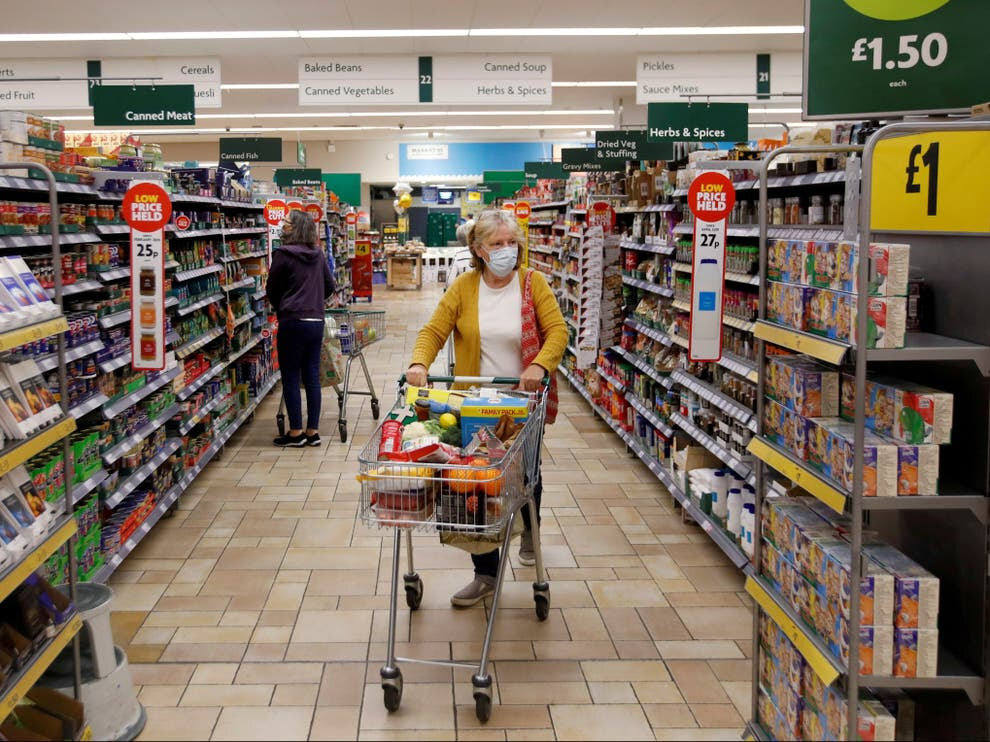Jul 26, 2021
Food Industry Giant Unilever Introduces Carbon Footprint Labels On Food

Image sourced from Reuters
Editor’s Note: Sustainability is continuing to take center stage in the food and agriculture sectors. Unilever's decision to put carbon footprint labels on a select range of products by the end of 2021 will not only help better inform consumers, but will also catalyze climate action plans within supply chain companies as well. Here at Agritecture we are striving to take sustainability to the next level in the CEA industry through our 3rd Annual Global CEA Census, which this year focuses specifically on growers' perspectives on sustainability.
CONTENT SOURCED FROM THE INDEPENDENT
Written By: David Cohen
Exclusive: New packaging will be on supermarket shelves by end of the year
One of the world’s biggest food and consumer goods companies is set to introduce carbon footprint labels on its products for the first time by the end of the year – marking a key moment in the shift to badge products with their cost to the planet, The Independent reveals today.
Unilever, which has 75,000 products including Magnum ice-cream, Pot Noodle, Marmite and Hellmann’s mayonnaise, said that the carbon footprint of 30,000 of these products would be measured within six months, with carbon footprint labels on a select range by the end of 2021.
The labels will be piloted on up to two dozen products in Europe or North America and could adorn packaging in UK supermarkets by the end of 2022. Unilever said it plans to badge its entire product range over the next two to five years and also floated the idea of supermarkets creating “carbon-neutral or carbon-friendly” aisles, just like they have ”vegetarian aisles”, to help consumers make greener choices.
It is the first move by a global player to introduce carbon footprint labelling and could shake up supply chains in the food and drinks industry, causing other companies to fall in line or accelerate their plans. It comes as Boris Johnson’s food tsar, Henry Dimbleby, recommended a move towards consistent labelling that shows the environmental impact of products. The National Food Strategy, released on Thursday, said the Food Standards Agency should work with government and industry bodies to “develop a harmonised and consistent food-labelling system”.
It said: “Creating a simple and consistent method of labelling would ensure that all shops and manufacturers give us the same kind of information about our food. Having to record information about the environmental impact of food production could also influence the way that manufacturers make their products.”
Last month, Marks & Spencer and Costa Coffee agreed to pilot an “eco-score traffic light-style” label on select own-brand products from September. The label, developed by scientists at the University of Oxford and launched by the non-profit group Foundation Earth, will be graded into tiers marked A to G and colour-coded – green for the most environmentally friendly and red the least. It will involve 13 brands, including meat brand Naked, and they hope to follow up the pilot by expanding into Europe next year.
Previously carbon footprint labels have been used only by plant-based companies, such as Quorn Foods and Oatly.
Marc Engel, Unilever’s global head of supply chain, said: “We are halfway to ‘knowing’ what the carbon footprint of our product range is and we think now is the moment to begin ‘showing’. Our market research shows that younger consumers especially are very impacted by climate change and are keen to use their buying behaviour to send a message. We intend to roll out carbon labels on our entire product range over the next two to five years and believe it will transform not only the actions of consumers, but of the thousands of businesses in our supply chain as well.”
Unilever’s move was welcomed by the government as well as early adopters. A spokesperson for the Department for Environment, Food and Rural Affairs said: “We support Unilever’s ambitions to include carbon labelling on its products to help consumers in the fight against climate change.”
Sam Blunt, global marketing operations director for Quorn Foods, said the announcement of labels by the end of 2021 was “exciting”, adding: “A business of that size could really drive things forward and make a big difference, especially if they quickly roll out the labelling across their whole product portfolio.”
With about a third of the world’s greenhouse gas emissions coming from the food industry, according to the United Nations, carbon footprint labels serve as a quick way for consumers to evaluate the climate impact of a product. Measured as a carbon dioxide equivalent (CO2e) value, it shows the environmental cost from farm to fork, taking into account fertiliser use, energy needs, transport, processing, refrigeration and packaging.
But arguments as to what data to include in the label – as well as underlying concerns as to how accurate that data is – still divide opinion behind the scenes.

